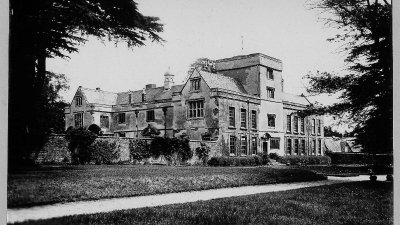Canons Ashby

His son, Erasmus, created the final footprint of the buildings by joining a medieval farm building to the house creating the pebble court. His legacy was to commission the spectacular murals hidden for centuries until the National Trust restoration in 1980.
In the 18th century Edward Dryden made significant changes to the south façade by facing it with dressed stone and replacing the stone mullioned bay windows with fashionable sash.
Inside, Edward modernised the interior to create a Palladian ideal. He commissioned his cousin, Elizabeth Creed, to produce the decoration scheme in the Painted Parlour.
Edward’s uncle was the most famous member of the family. John Dryden (1631-1700) was Poet Laureate in 1668. His immense creative output included political satire and some of the finest classic translations.
Sir Henry Dryden inherited Canons Ashby in 1837 at 19 years old. Known as ‘the Antiquary’, he was passionately interested in architecture and history, especially that of his own family and estate, recording everything he could. He cared for Canons Ashby for most of the Victorian era.
Canons Ashby declined through the 20th Century and was let to various tenants. One, Louise Osman, created the Prince of Wales’ investiture crown at Canons Ashby.
The estate was given to the National Trust in 1981.